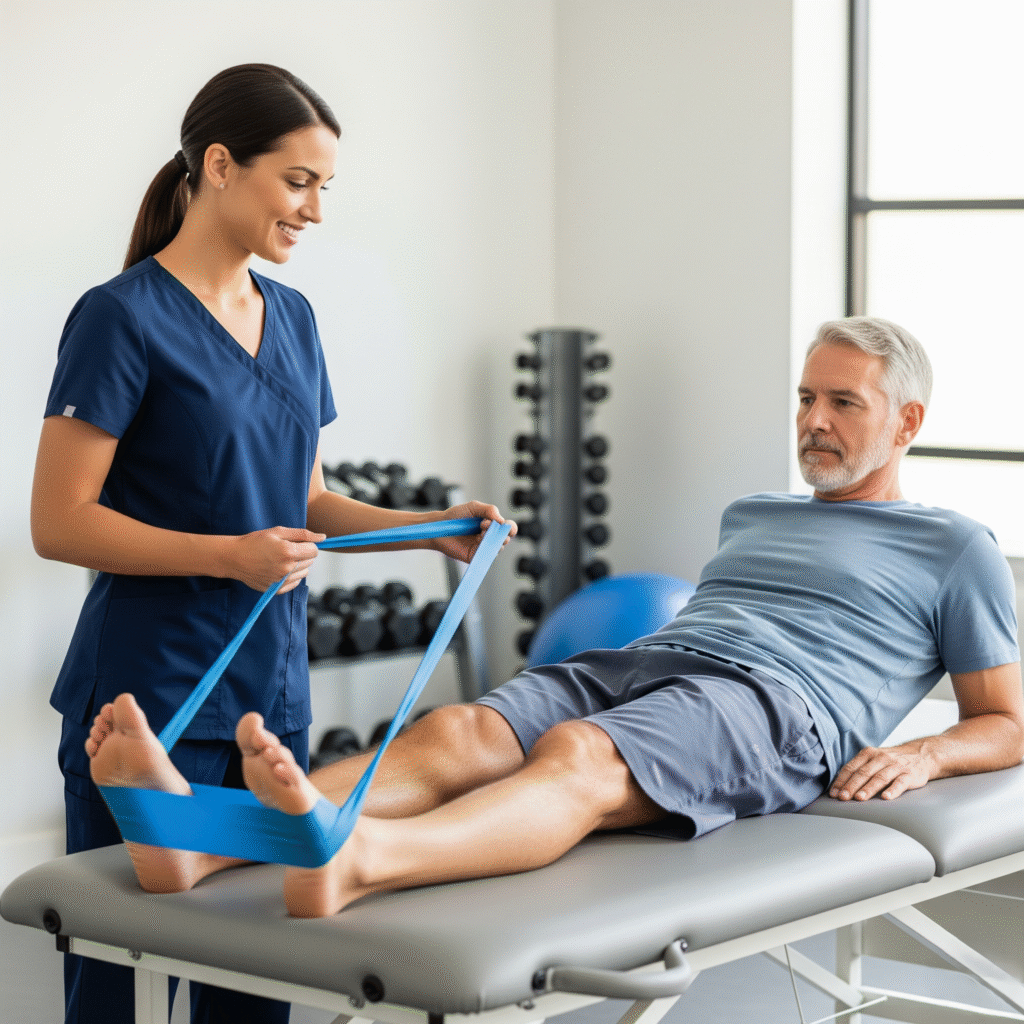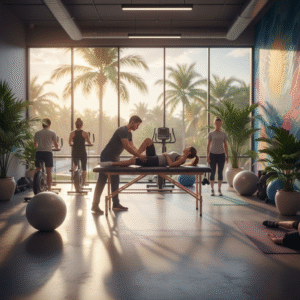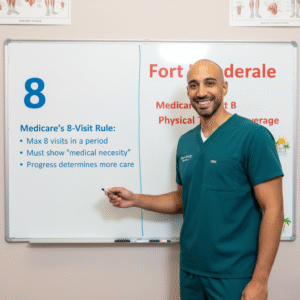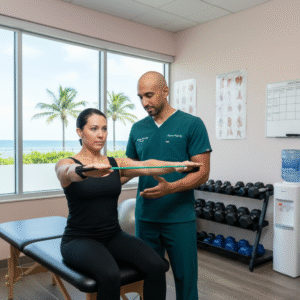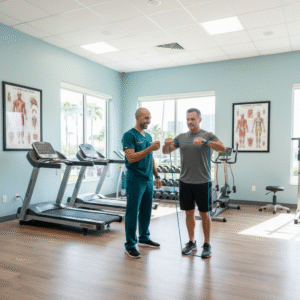Introduction: Does Physical Therapy Work?
Physical therapy (PT) is often recommended for everything from post-surgery recovery to chronic pain relief and mobility improvement. But is physical therapy effective, or is it just a temporary fix? Let’s break down the science, statistics, and benefits behind this widely used treatment option.
What is Physical Therapy?
Physical therapy is a non-invasive, science-backed treatment that helps individuals restore physical function and manage pain. Therapists use a combination of:
- Manual therapy
- Targeted exercises
- Stretching and mobility drills
- Electrical stimulation
- Heat and cold therapy
Its primary goal is to enhance mobility, strengthen muscles, and improve quality of life, without relying on medications or surgery.
How Effective is Physical Therapy? Scientific Evidence
According to the American Physical Therapy Association (APTA) and multiple peer-reviewed studies:
- 80-90% of patients report improvement in pain and mobility within 6-8 weeks of starting PT.
- Physical therapy is as effective, if not more, than surgery for conditions like meniscus tears, rotator cuff injuries, and lumbar spinal stenosis.
- Early physical therapy reduces the risk of chronic disability by 60% in cases of lower back pain.
Key Benefits of Physical Therapy
1. Pain Relief Without Drugs
Therapeutic exercises and manual techniques like joint mobilization help reduce pain naturally. Unlike painkillers, PT treats the root cause, not just the symptoms.
2. Avoids Surgery in Many Cases
PT is often recommended before opting for surgery. For conditions like arthritis, herniated discs, or tendonitis, therapy can delay or completely avoid surgical intervention.
3. Restores Mobility and Flexibility
Physical therapists tailor routines to improve range of motion, flexibility, and joint function, ideal for post-injury or post-surgery recovery.
4. Enhances Balance and Coordination
PT helps older adults or stroke survivors improve balance, reducing fall risks and increasing daily independence.
5. Accelerates Recovery from Injuries
Athletes, accident victims, and post-op patients recover faster with targeted therapy. PT minimizes scar tissue, strengthens affected areas, and restores full function.
6. Manages Age-Related Conditions
Osteoporosis, arthritis, and joint degeneration can be slowed down with regular PT sessions.
Common Conditions Treated with Physical Therapy
- Lower back pain
- Neck and shoulder pain
- ACL injuries and meniscus tears
- Post-surgical rehab
- Stroke rehabilitation
- Sciatica and nerve pain
- Sports injuries
- Arthritis and joint pain
- Tendonitis and bursitis
Patient Success Stories and Case Studies
Case Study 1: Lower Back Pain
A 40-year-old male with chronic lumbar pain avoided surgery through 10 weeks of PT. Strengthening core muscles and correcting posture eliminated 90% of his discomfort.
Case Study 2: ACL Tear Recovery
A female soccer player returned to her sport within 6 months after ACL reconstruction surgery, with the help of progressive rehab programs.
Case Study 3: Stroke Rehabilitation
An elderly woman regained 70% of lost motor function and reduced fall risk with 12 weeks of balance and strength therapy.
Manual Therapy vs. Modalities: What Works Best?
While tools like ultrasound and electrical stimulation (modalities) aid recovery, manual therapy and exercise have shown the highest success rates. Combining hands-on techniques with functional movements leads to long-term results.
How Long Does Physical Therapy Take to Work?
- Minor injuries: 2–6 weeks
- Post-surgery rehab: 6–12 weeks
- Chronic pain: Ongoing management with periodic sessions
- Stroke/neurological recovery: Varies (months to years)
Consistency and patient commitment play a huge role in outcome success.
When Physical Therapy May Not Be Enough
PT is highly effective, but not a miracle cure. It may be less effective if:
- The injury is severe or degenerative
- The patient skips sessions or doesn’t follow home exercises
- Surgery is medically required (e.g., torn ligaments)
In such cases, PT can still play a vital role pre- and post-surgery.
Physical Therapy vs. Other Treatments
| Treatment | Cost | Risk Level | Effectiveness | Invasive? |
|---|---|---|---|---|
| Physical Therapy | Low | Low | High (when consistent) | No |
| Surgery | High | High | High (with downtime) | Yes |
| Pain Medications | Medium | Medium | Temporary relief | No |
| Chiropractic Care | Medium | Low | Variable | No |
Tips for Getting the Most Out of Physical Therapy
- Be consistent with appointments and home exercises.
- Communicate openly with your therapist about pain or progress.
- Stay motivated by tracking improvements weekly.
- Follow-up care is key to maintaining gains.
Conclusion: Yes, Physical Therapy Is Effective!
From managing chronic pain to speeding up injury recovery, physical therapy is scientifically proven to be effective, especially when combined with consistent effort and professional guidance. It’s a safe, non-invasive, and affordable path to long-term physical wellness. Contact us today!

